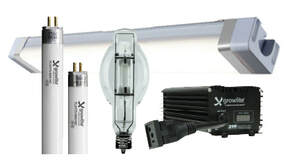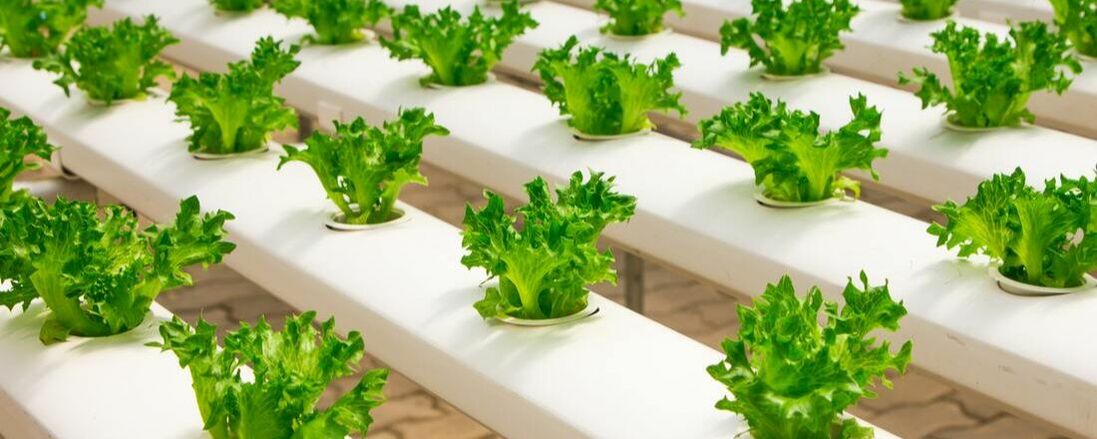|
Take a step towards the future of farming with horticulture lighting. Grow crops year round with tailor-made lighting systems where outdoor conditions are mimicked for optimal growth. Choose a horizontal farm or a vertical farm system. Horizontal farms are what most people are familiar with - all plants on the ground level. Vertical farms, however, are growing in popularity due to their space-saving benefits. They allow for more plants to be packed closer together and stacked on top of each other on shelving units; maximizing the grow. When plants are grown in a controlled environment, color spectrum, temperature and light intensity can be regulated so crops can thrive with faster growth, bigger harvests and higher quality plants. Indoor farming can be difficult and there is lots of science that comes into play. Here’s a quick overview of the grow cycle The mother plant is where the cycle begins. Typically, crops are not cultivated starting with seeds. Rather, a clone plant is grown by cutting an off-shoot from a branch of the mother plant and then dipped into rooting gel. After about 7-12 days, roots begin to develop on the clone plant. The plants then go through the vegetative and flowering/fruiting stages. In the flowering stage, lights are on for about 12 hours and off for about 12 hours per day. During the 12-hour dark cycle, it’s important that there is absolutely no light present in the room. Lastly, the plants are harvested. How does your light bulb choice affect the growth? There is still some debate about which lighting applications are ideal and which type of lighting is needed to obtain the best responses in plant growth. Green plants need light for photosynthesis to take place. Photosynthesis is the process by which green plants use sunlight to synthesize foods from carbon dioxide and water. Light exposure in greenhouses can be limited so supplemental lighting is needed to grow plants all year long. The three types of bulbs that are most commonly used are High Pressure Sodium, Metal Halide and LED. High Pressure Sodium High Pressure Sodium (HPS) bulbs are used during the vegetative and reproductive cycles. They may also be used as supplemental light for full-spectrum lighting. HPS bulbs emit a yellow-red visible light. The red spectrum may induce a greater flowering and fruiting response in plants and may cause the plants to grow more rapidly. In a greenhouse, plants receive light from blue spectrum naturally, so HPS bulbs are often used as supplemental lighting so the plants also receive light from the red spectrum. Metal Halide Metal Halide and HPS lamps have a color spectrum similar to the sun’s rays, which make them great for growing plants. Metal Halide bulbs are commonly used in the vegetative cycle since they radiate blue and ultraviolet radiation. Blue spectrum lighting may initiate a better vegetative response in plants. LED; Light Emitting Diode The white light from LED bulbs provide a full-spectrum of light designed to emulate natural light with a balanced spectrum of red, blue and green. LEDs are a great choice for all grow operations. The industry standard for the vegetative cycle is to use 400W HID bulbs. Even in a small grow room, energy costs can be astronomical. LED bulbs are great not only for lowering your energy costs, but they also produce little to no heat. Even though they produce little heat, LED grow lights should be kept at least 12” away from plants to prevent leaf burn.  Need a reputable horticulture lighting brand? Look no further than Growlite. Growlite and Barron Lighting Group together have been in business for over 100 years. They are pushing to challenge the status quo of horticulture lighting products with innovative ideas in a niche market. Their mission is to provide the highest quality, safest products in the market and educate the indoor grow market with the latest and greatest technologies. They continue to deliver state-of-the-art lamps, ballasts and fixtures engineered specifically for the indoor horticulture market. While we don't claim to be horticulture farming experts, Lighting Supply is your one-stop shop for all horticulture lighting products including lamps, ballasts and fixtures from trusted brands. Please contact an expert when looking to set up your own grow operation. If you have any questions regarding the lighting aspects, give our Customer Service team a call at 877.231.2852 or leave a comment below. We are always happy to help!
1 Comment
7/1/2020 08:46:44 am
Horticultural industries may enjoy some potential benefits from LED characteristics, such as the ability to develop a spectral power that is tuned to the specific crop grown and adjusted over the plants’ lifecycle and the potential to have greater influence over the quality of the finished product by adjusting the light.
Reply
Your comment will be posted after it is approved.
Leave a Reply. |
This blog's content is copyright © 2014-19 Lighting Supply.


